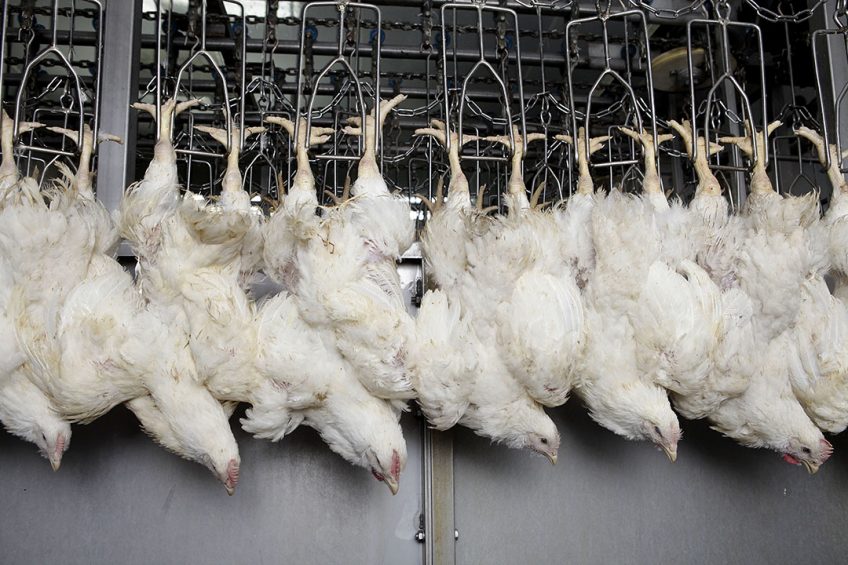Diversity, not uniformity in waterbath stunning

Research in Belgian slaughterhouses showed a large variation in slaughter and stunning practices among the different processors. The minimum average electrical current that every chicken should receive at a certain frequency was not achieved for each animal monitored.
In the European Union poultry, at the time of killing, is stunned by an appropriate method before slaughter and birds should remain unconscious and insensible to pain until death occurs. There are exceptions for religious rites, as for Jewish (shechita), Muslim (halal), and Sikh (jhatka) communities.
EU slaughter methods
In the European Union the majority of broilers (80%), laying hens (83%), parent flocks (61%), and turkeys (76%) slaughtered are stunned by electrical waterbaths. Other methods applied are controlled atmosphere stunning and head-only electrical stunning. Low atmosphere pressure stunning, is only allowed in the United States.
How waterbath stunning is conducted
Most poultry slaughterhouses apply a multiple-bird waterbath for electrical stunning, in which the voltage is applied between 2 electrodes:
- one is located at the bottom of the waterbath,
- the other one is the shackle line.
The electrical circuit is closed when the bird’s head enters the water resulting in an electrical current flowing through the bird, causing unconsciousness. Consciousness is defined as the ability to feel emotions and to control voluntary mobility, whereas sensibility is defined as the ability to feel pain.
Calculating the electrical current
In the EU regulation requirements are set regarding the minimum electrical average current for each bird submitted to waterbath stunning to receive at certain frequencies of the electrical current. It is difficult to measure the electrical current passing through each bird in slaughterhouse conditions. In such a context, the minimum electrical current is estimated as the total electrical current flowing through the waterbath, divided by the number of birds that are simultaneously submerged in the waterbath.
Study data on Belgian poultry slaugherhouses
In this study data on slaughter and stunning protocols in all Belgian poultry slaughterhouses were collected, subsequently the survival rate after electrical waterbath stunning in 1,400 animals across 7 selected slaughterhouses was determined. The majority of the abattoirs applied electrical waterbath stunning (72%), other methods were gas stunning (13%), head-only stunning (6%), and dry stunning (3%). In 6% of the slaughterhouses, the birds were killed without previous stunning, according to religious rites.
A blast from the past: Waterbath stunning causing problems
Minimum average electrical current not achieved
Substantial variation both in electrical waterbath devices and technical settings (electrical current type, wave type, voltage, frequency) combinations was observed. These settings did not only differ between slaughterhouses, but also between subsequent visits to the same slaughterhouse. Despite this variation, all systems comprised a constant voltage, multiple bird stunner. The minimum average electrical current that every chicken should receive at a certain frequency was not achieved for each animal monitored due to the bird’s characteristics and the different applied stunning settings. Monitoring of unconsciousness after passing through the waterbath was not always performed and when it was, there was no uniformity in the applied criteria. Further research should explore the effect of the different settings on inducing a successful stun and on carcass quality, and assess if the observed variation also exists in other EU member states.
Join 31,000+ subscribers
Subscribe to our newsletter to stay updated about all the need-to-know content in the poultry sector, three times a week. Beheer
Beheer








 WP Admin
WP Admin  Bewerk bericht
Bewerk bericht